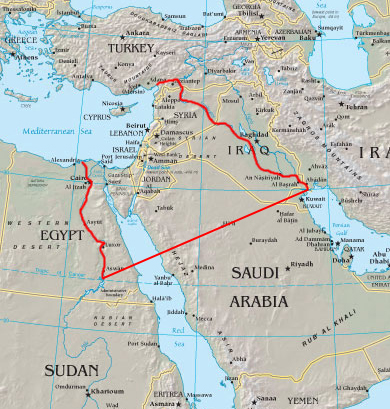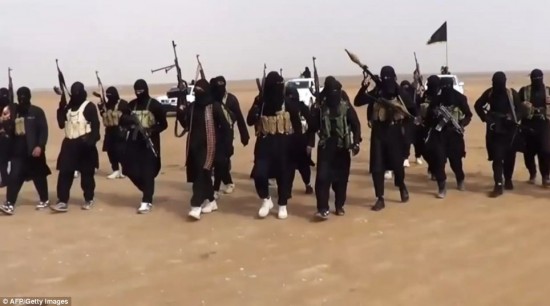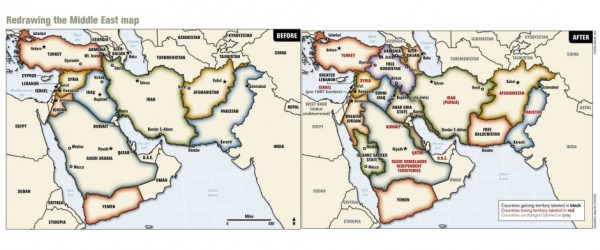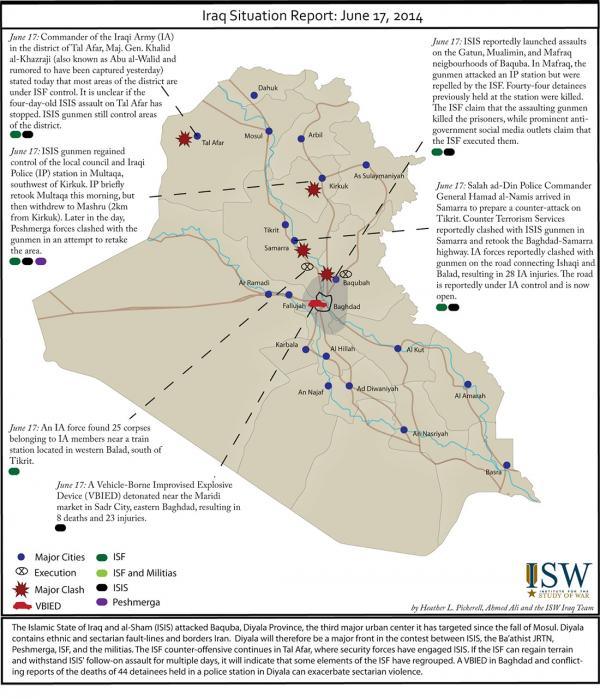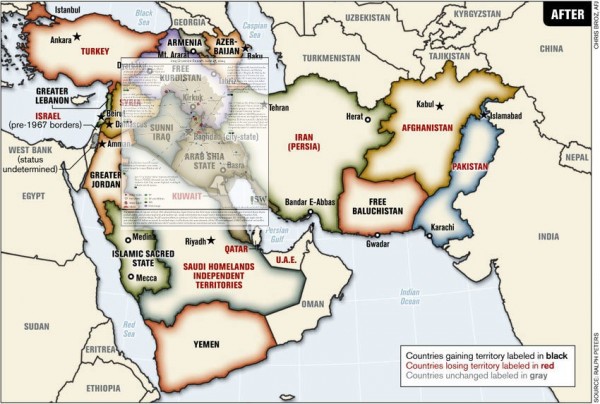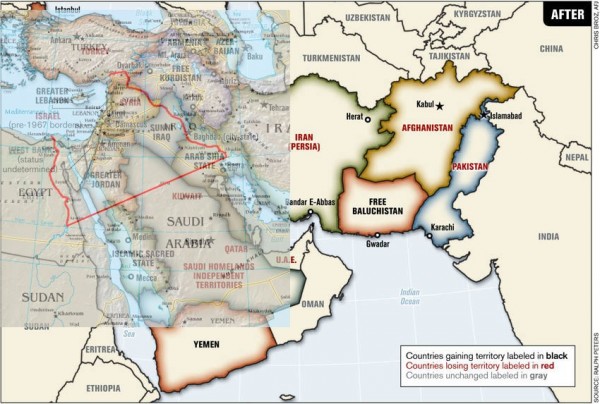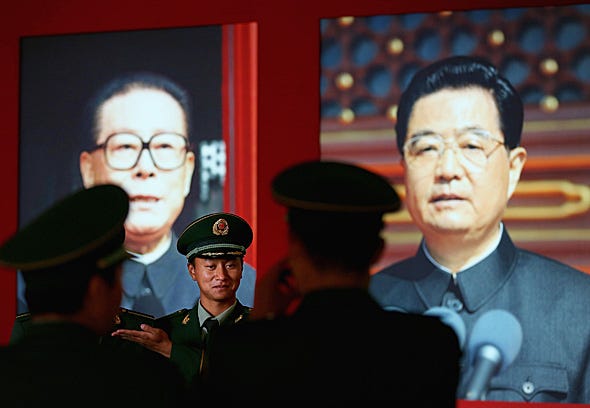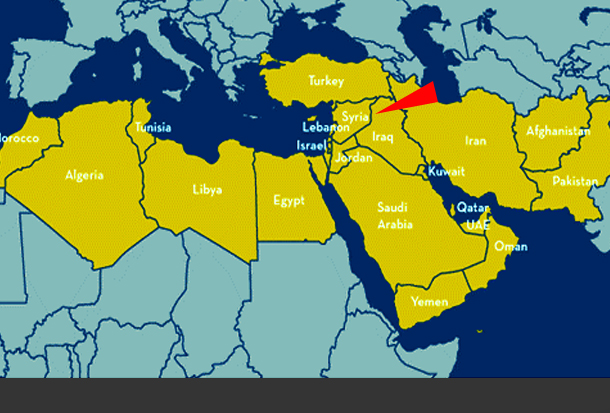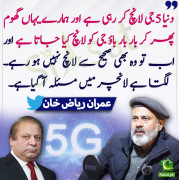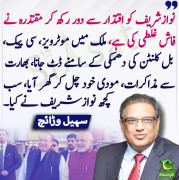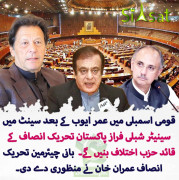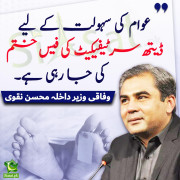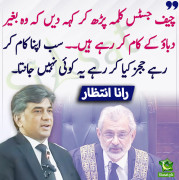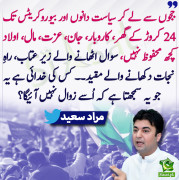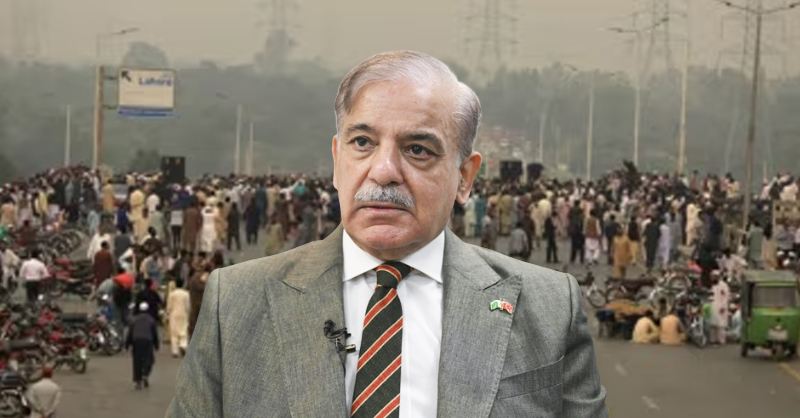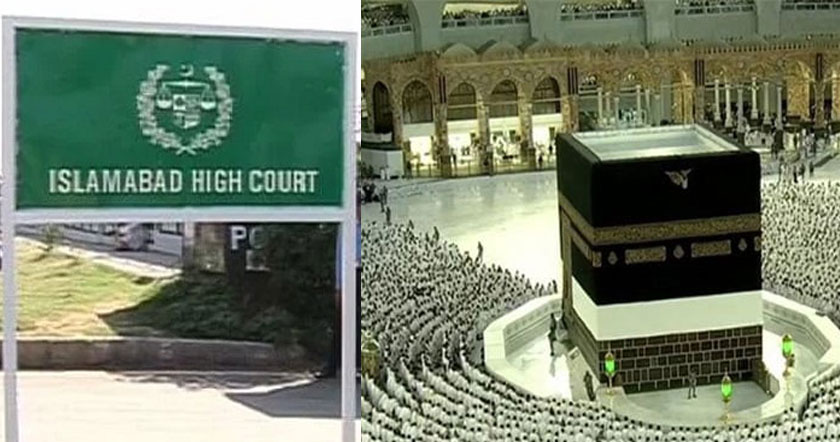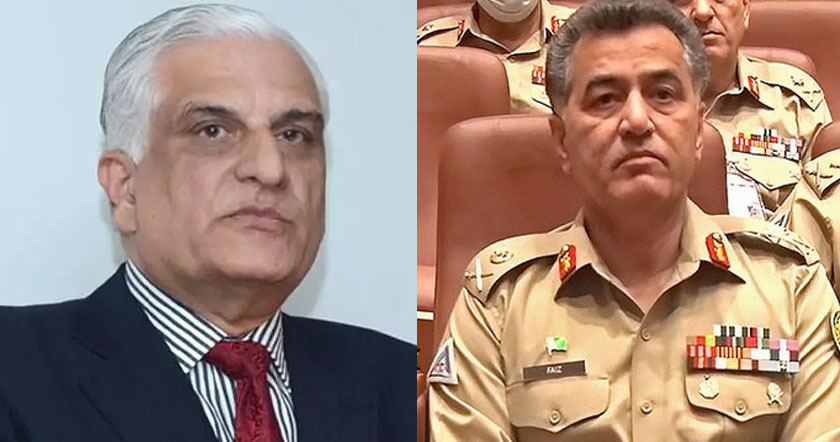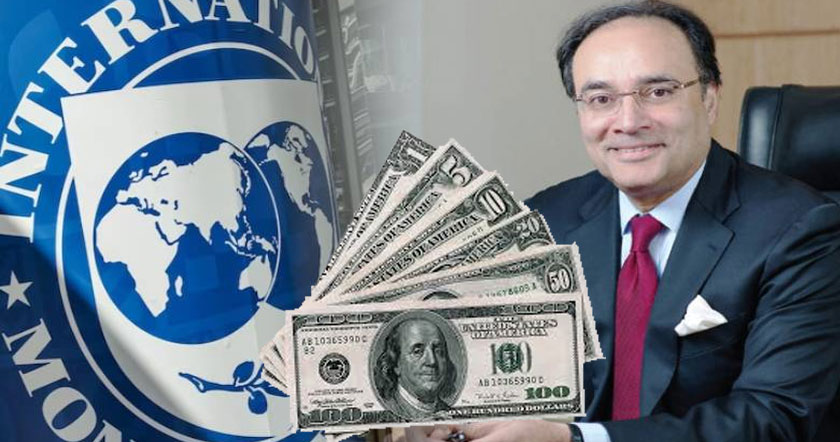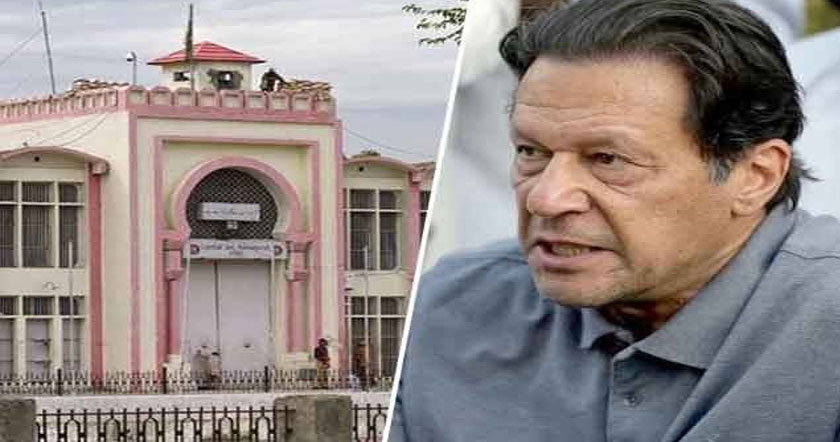GREATER ISRAEL Israeli 1982 Plan for Mideast Empire Aided by ISIS By Ronald L. Ray — 
Divide and conquer is an age-old strategy for empire-builders. Drive your opponents to fight among themselves, then pillage and subjugate them. Josef Stalin successfully employed this method in World War II, with the fawning complicity of Winston Churchill and Franklin Roosevelt. Now the Zionists—and their American lackeys—are doing the same to establish Israeli hegemony throughout the Middle East and North Africa. And it was long planned. But is the intention merely for “Greater Israel”—“from the Nile to the Euphrates,” as Theodor Herzl proclaimed—or is this the first step toward a world empire we should call “Greater Khazaria”? In 1982, the World Zionist Organization’s Department of Information, their propaganda arm, published “A Strategy for Israel in the Nineteen Eighties,” by Oded Yinon. This “Yinon Plan” has been followed for decades by Israel in order to establish “Greater Israel.” Download Yinon Plan. The Association of Arab-American University Graduates finds it compelling to inaugurate its new publication series, Special Documents, with Oded Yinon’s article which appeared in Kivunim (Directions), the journal of the Department of Information of the World Zionist Organization. Oded Yinon is an Israeli journalist and was formerly attached to the Foreign Ministry of Israel. To our knowledge, this document is the most explicit, detailed and unambiguous statement to date of the Zionist strategy in the Middle East. Furthermore, it stands as an accurate representation of the “vision” for the entire Middle East of the presently ruling Zionist regime of Begin, Sharon and Eitan. Its importance, hence, lies not in its historical value but in the nightmare which it presents. The plan operates on two essential premises. To survive, Israel must 1)become an imperial regional power, and 2)must effect the division of the whole area into small states by the dissolution of all existing Arab states. Small here will depend on the ethnic or sectarian composition of each state. Consequently, the Zionist hope is that sectarian-based states become Israel’s satellites and, ironically, its source of moral legitimation. http://muslimvillage.com/2014/06/14/54429/zionisms-plan-for-the-middle-east/ Recently, the German-language website “National Journal” illustrated the surprising, key role the Islamic State (IS), also known as ISIS, plays in the success of this Zionist quest for regional domination—although ostensibly Israel’s enemy. The Yinon Plan stated that Iraq was then the greatest obstacle to an Israeli Middle Eastern empire and control of the area’s wealth of natural resources. The first stage was to weaken both Iran—an Israeli ally under the shah—and Iraq through war against each other. After this, the American invasion in 2003 was to lead to the division of Iraq into three smaller, ethno-religious states operated by Sunni and Shiite Muslims in the middle and south, and a new Kurdistan in the north. ISIS is the means by which Israel and the United States—which established, trained and supplied the terrorist organization—have nearly succeeded in the tripartition. It is no accident that Israeli Prime Minister Benjamin Netanyahu declared that the Kurds “deserve” their own country for being “brave fighters” against ISIS. Ironically, he denies the same courtesy to the brave Palestinians resisting Israeli occupation. But do not expect Israel to help destroy ISIS. “When your enemies are fighting each other, don’t strengthen either one of them; weaken both,” said Netanyahu on NBC’s Meet the Press on June 22. Nevertheless, the Balkanization of the Middle East is not just a Jewish strategy, as the U.S., Great Britain and the European Union (EU) are key players. American neoconservatives led by Richard Perle developed an amplification of the Yinon Plan in 1996 named A Clean Break: A New Strategy for Securing the Realm and The Atlantic and Armed Forces Journal published maps in 2006 and 2008, which demonstrate that U.S. military strategy is also founded on the same sinister intentions. Source: http://americanfreepress.net/?p=19547 |
| The Yinon plan: “Greater Israel”, Syria, Iraq, and ISIS Source: timesofpol.com August 13, 2014 | Filed under: Featured,Opinion | Posted by: MV Media By: ANON Source: http://www.timesofpol.com/ The Zionist Plan for the Middle East, also known as the Yinon Plan, is an Israeli strategic plan to ensure Israeli regional superiority. It insists and stipulates that Israel must reconfigure its geo-political environment through the balkanization of the surrounding Arab states into smaller and weaker states. When viewed in the current context, the war on Iraq, the 2006 war on Lebanon, the 2011 war on Libya, the ongoing war on Syria, not to mention the process of regime change in Egypt, must be understood in relation to the Zionist Plan for the Middle East. The latter consists in weakening and eventually fracturing neighboring Arab states as part of an Israeli expansionist project. “Greater Israel” consists in an area extending from the Nile Valley to the Euphrates. Israeli strategists viewed Iraq as their biggest strategic challenge. This is why Iraq was outlined as the centerpiece to the balkanization of the Middle East and the Arab World. In Iraq, on the basis of the concepts of the Yinon Plan, Israeli strategists have called for the division of Iraq into a Kurdish state and two Arab states, one Shiite and the other Sunni. The Atlantic, in 2008, and the U.S. military’s Armed Forces Journal, in 2006, both published widely circulated maps that closely followed the outline of the Yinon Plan. Aside from a divided Iraq, the Yinon Plan calls for a divided Lebanon, Egypt, and Syria. The Yinon Plan also calls for dissolution in North Africa and forecasts it as starting from Egypt and then spilling over into Sudan, Libya, and the rest of the region. “Greater Israel” requires the breaking up of the existing Arab states into small states. The plan operates on two essential premises. To survive, Israel must
Small here will depend on the ethnic or sectarian composition of each state. Consequently, the Zionist hope is that sectarian-based states become Israel’s satellites and, ironically, its source of moral legitimation… This is not a new idea, nor does it surface for the first time in Zionist strategic thinking. Indeed, fragmenting all Arab states into smaller units has been a recurrent theme. Viewed in this context, the war on Syria is part of the process of Israeli territorial expansion. Israeli intelligence working hand in glove with the US, Turkey and NATO is directly supportive of the Al Qaeda terrorist mercenaries inside Syria. The Zionist Project also requires the destabilization of Egypt, the creation of factional divisions within Egypt as instrumented by the “Arab Spring” leading to the formation of a sectarian based State dominated by the Muslim Brotherhood. Similarly, although tweaked, the Yinon Plan is in motion and coming to life under the “Clean Break”. This is a policy document written in 1996 by Richard Perle and the Study Group on “A New Israeli Strategy Towards 2000″ for Benjamin Netanyahu, the prime minister of Israel at the time. Like many in the neoconservative movement, Perle had long been an advocate of regime change in Iraq. In 1998 Perle led an effort known as the Project for the New American Century with close neoconservative allies Wolfowitz, Woolsey, Elliott Abrams, and John Bolton. The Project culminated in a letter sent to US President Bill Clinton calling for the military overthrow of Saddam Hussein’s regime. Prior to and after the 2003 invasion of Iraq, Perle held several exclusive meetings in his home where he discussed issues regarding American foreign policy on Iraq. In an effort to help fund their goals, Ahmed Chalabi an Iraqi-born businessman and founder of the Iraqi National Congress, helped Perle secure millions of dollars from the U.S. government in 1990. Chalabi was one of the key figures driving the war in Iraq and helped transmit important “information” to U.S congress and the public that would successfully help sell the war effort. One might remember that it was PNAC that also published the now infamous document “Rebuilding Americas Defenses” in which the following statement was made: Further, the process of transformation [of the military], even if it brings revolutionary change, is likely to be a long one, absent some catastrophic and catalyzing event––like a new Pearl Harbor”. Finally, as mentioned above, the Armed Forces Journal published an article in 2006 entitled: “Blood Borders”. What follows are maps based upon the description in the article. One is the Middle East as it currently exists, and the other is the Middle East according to the suggestions in the article: You will note how congruent these divisions are with both the Yinon Plan and “Clean Break”. You might also note that the advance of ISIS in Iraq, thus far, is congruent with all three documents. They are not engaging the Kurds and have stopped North of Baghdad, thus effectively dividing Iraq into three states as pictured on the map: Free Kurdistan, Sunni Iraq, and the Arab Shia State. Only time will tell whether ISIS attempts to push into Baghdad, or whether the city, itself, is divided along sectarian lines. As you can see in the image, Baghdad is right on the border of “Sunni Iraq” and the “Arab Shia” State. Here is a map of recent movements of the ISIS insurgency: You will notice, by comparing them to the map above that they have control over the area depicted as “Sunni Iraq”. With the exception of Kirkuk, you will notice that the territory that they control aligns roughly with the borders of the proposed “Sunni Iraq” in the Blood Borders image above. The following image is an overlay of the map of ISIS controlled territory over the map of the newly proposed bordersof the Middle East to make it easier to see the congruity between ISIS movements and the Yinon plan: While there are various conceptions of the borders of “Greater Israel” (Eretz Israel HaShlema), here is an overlay of the image of “Greater Israel” (above) on the map of the newly proposed borders of the Middle East to give a sense of the area of balkanized Arab states that Israel would have in its sphere of influence if the Yinon Plan is successfully implemented: Either the Yinon Plan is actually being implemented, using the sectarian animosity within the Muslim community as the vector or it is phenomenally coincidental that from Sudan, to Egypt, Libya, Syria, and Iraq the essential tenets of the Yinon Plan are being implemented. It would certainly explain many of incongruities that we see in US foreign policy, especially with regard to our decision to arm and fund radical Islamic groups in Syria. Source: http://muslimvillage.com/2014/08/13/56742/the-yinon-plan-greater-israel-syria-iraq-and-isis/ |


